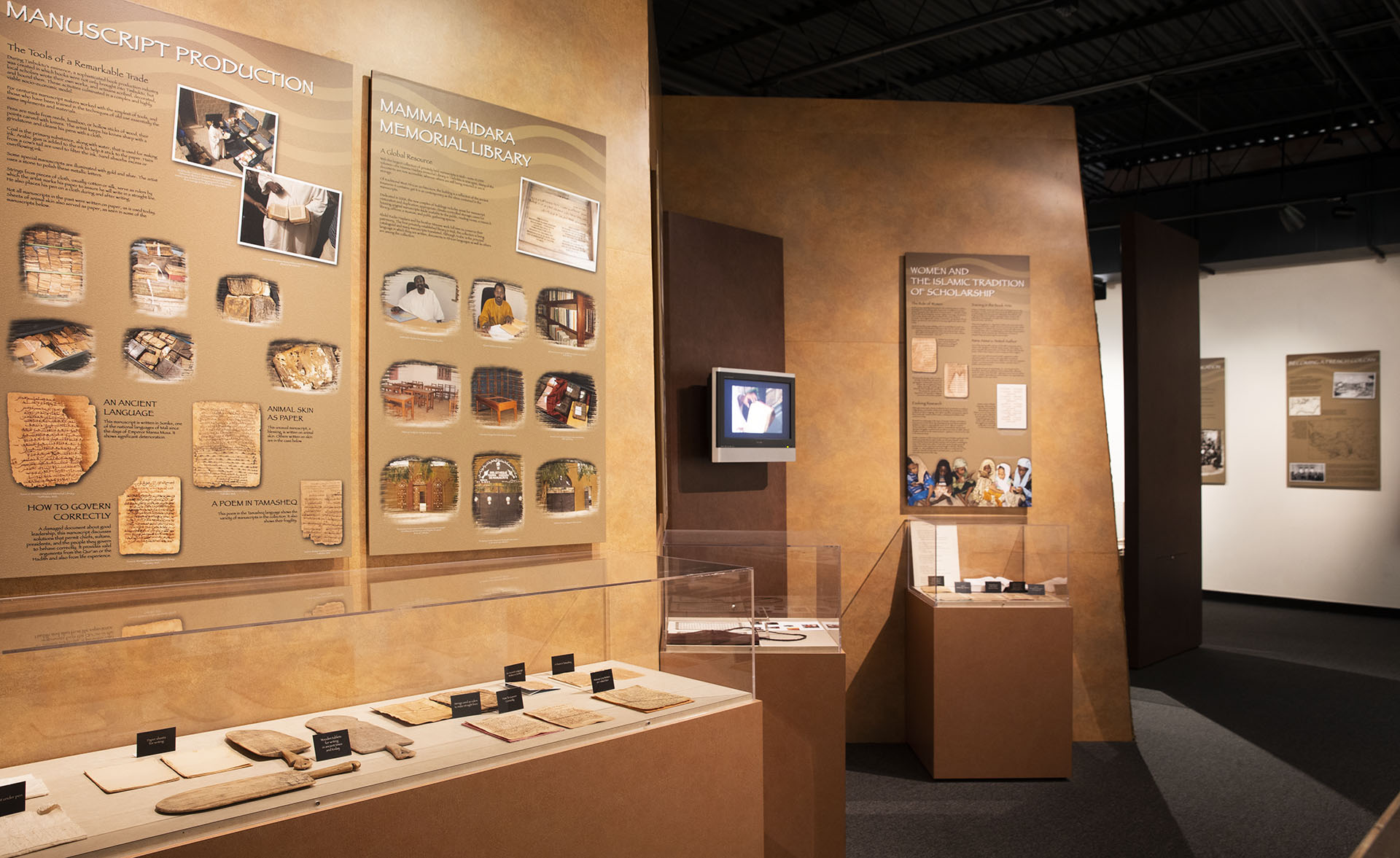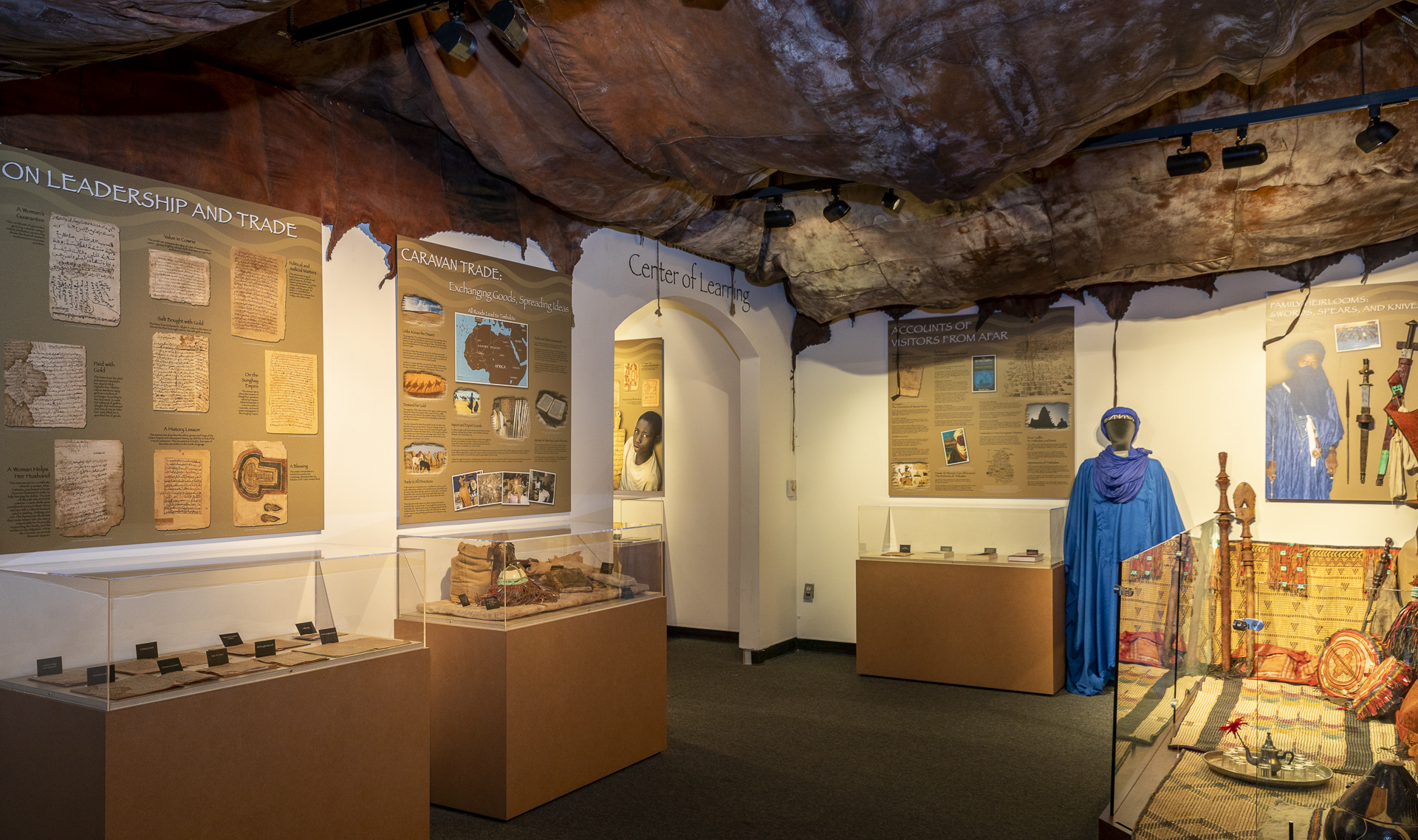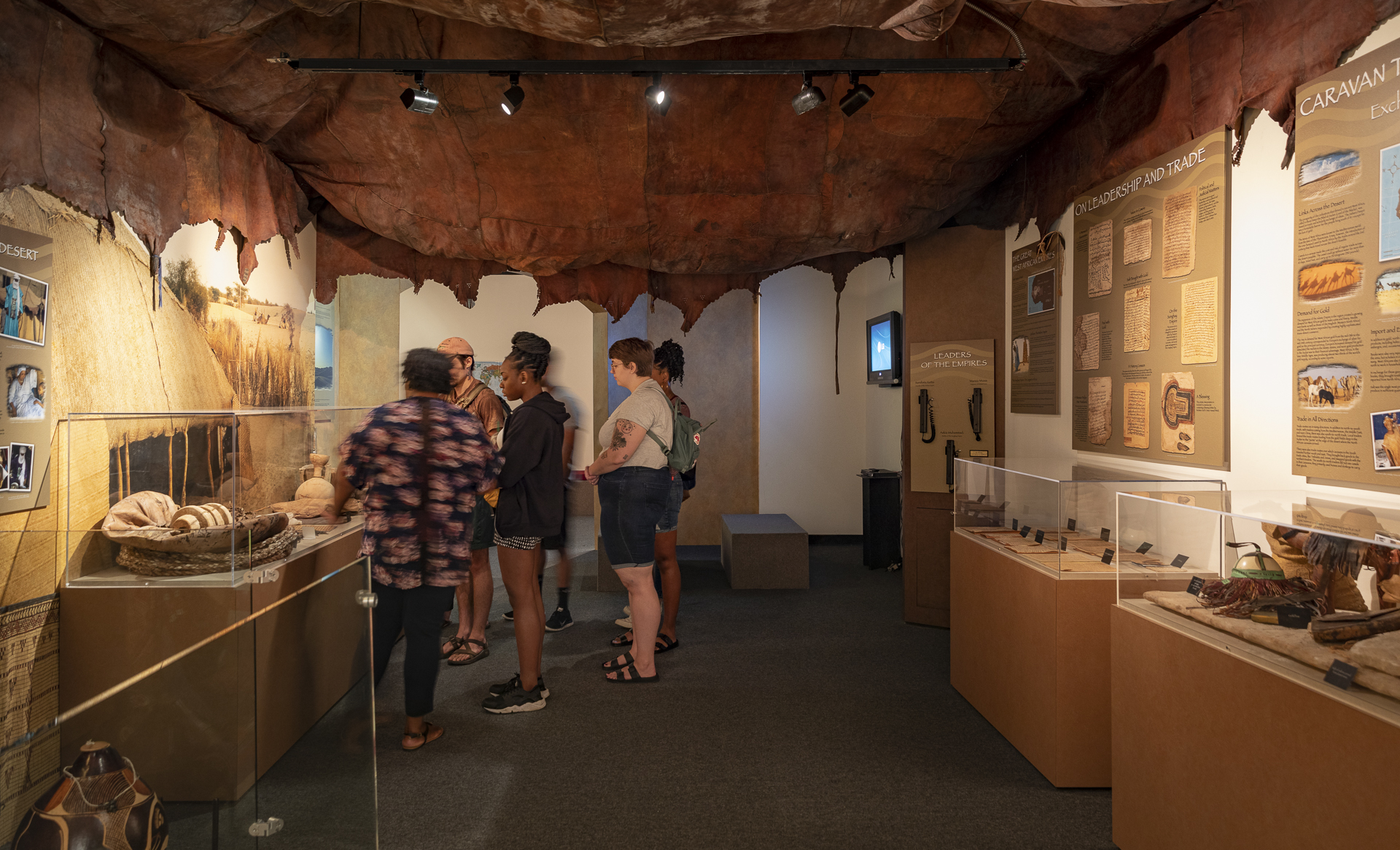Legacy of Timbuktu:Wonders of the Written Word
In the last millennium, an important global legacy was uncovered—the literate culture of AFRICA—highlighted in the extraordinary richness of historical manuscripts dating back to the 13th century. These ancient documents reveal that a sophisticated literate culture flourished in the city of Timbuktu in present-day Mali, lasting more than 700 years. A crossroads of international caravan commerce, including the book trade, Timbuktu was also a celebrated center of learning, attracting scholars from many countries and backgrounds.
The International Museum of Muslim Cultures has partnered with the Mamma Haidara Memorial Library in Timbuktu to produce this exhibit that highlights the glorious age of pre-slavery West Africa.
Books were not only brought into Timbuktu, but local scholars wrote their own works, and artisans scribed, decorated, and bound them in a sophisticated local book production industry tied to the global Islamic knowledge industry—activities that culminated in a complex and highly viable socio-economic model. Leo Africanus, the celebrated medieval historian, wrote “the buying and selling of books was more profitable than any other commerce in the city of Timbuktu.” Our exhibit features a curated selection of the estimated one million manuscripts recently re-rediscovered in Mali. Bound in leather, they contain finely articulated calligraphy, colorful guilded illumination, and illustrations that cover a wide variety of subjects including theology, trade, governance, and poetry.
These manuscripts originated from the Mamma Haidara Memorial Library in Timbuktu, the largest of 22 private libraries in the city and holds over 9,000 ancient manuscripts and many printed books dating from before the 16th century. This is only the second time these manuscripts have left the continent of Africa and been on display in the US, with the first time being at the U.S. Library of Congress in 2003 to a limited audience. This is the first time the manuscripts have been on display to a national audience through a traveling exhibition.
In addition to the rare African manuscripts, visitors experience the rich intellectual and cultural blend of African and Islamic heritage shared through videos and audio production, interactive media, models, artifact displays, and hands-on activities. They learn about Islam’s spread into West Africa; life in a leather tent of Saharan caravan traders; the rise and decline of the great empires of West Africa and their leaders; the legendary Sankore Mosque and University; methods and tools of manuscript production; work of generational artisans; and traditional musical instruments that demonstrates the link between West African indigenous music and American blues.
Special thanks to the generous organizations and individuals who gave of their time, resources and expertise in creating this exhibition including but not limited to CommArts, Sound Vision, Dr. Stephanie Diakite, Dr. Abdellatif Attafi, Dr. Allan D. Austin, Dr. Douglas B. Chambers, Dr. Sylviane A. Diouf, Dr. John Hunwick, Dr. Ali A. Mazrui, Dr. Aminah B. McCloud, Dr. Sulayman Nyang, Dr. Hakim Abdullah Quick, Dr. Steve Rosenberg, Audrey Shabas, Dr. Steve G. Smith, Tariq Beard, and Habeebah Muhammad.
Visit Us
➤ LOCATION
201 E Pascagoula St, Jackson, MS 39201 USA
➤ VISITING HOURS
Tuesday – Sunday 10 am – 5 pm
Closed on Mondays
➤ CONTACT
admin@immuslimcultures.org
☎ (601) 960-0440




